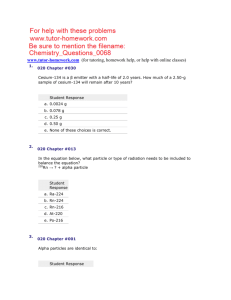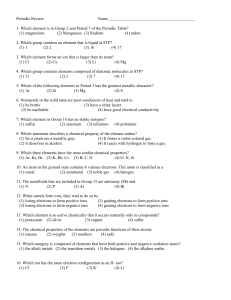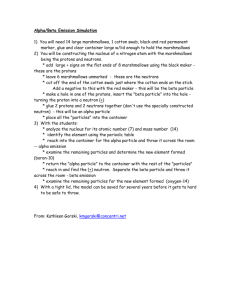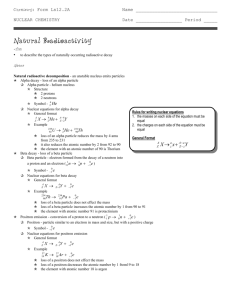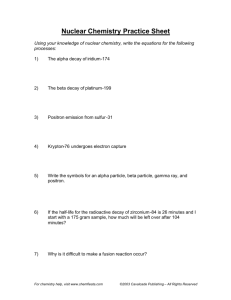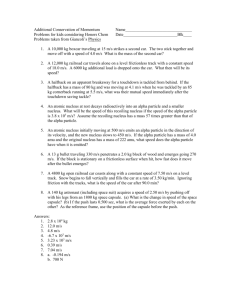Natural radiation series
advertisement
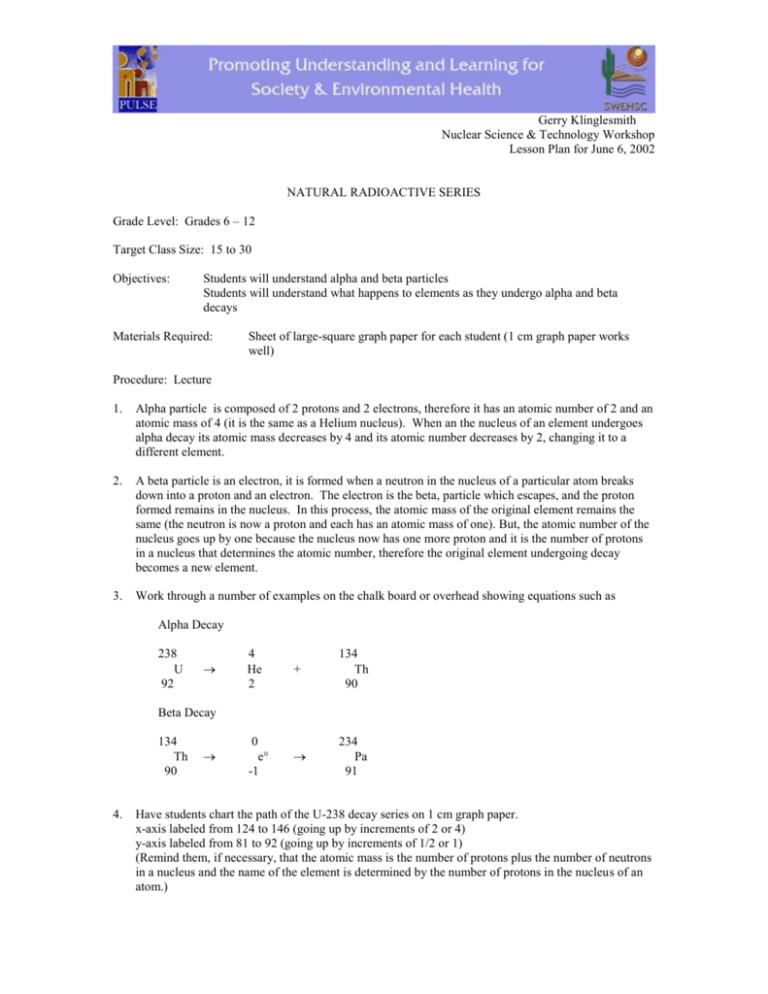
Gerry Klinglesmith Nuclear Science & Technology Workshop Lesson Plan for June 6, 2002 NATURAL RADIOACTIVE SERIES Grade Level: Grades 6 – 12 Target Class Size: 15 to 30 Objectives: Students will understand alpha and beta particles Students will understand what happens to elements as they undergo alpha and beta decays Materials Required: Sheet of large-square graph paper for each student (1 cm graph paper works well) Procedure: Lecture 1. Alpha particle is composed of 2 protons and 2 electrons, therefore it has an atomic number of 2 and an atomic mass of 4 (it is the same as a Helium nucleus). When an the nucleus of an element undergoes alpha decay its atomic mass decreases by 4 and its atomic number decreases by 2, changing it to a different element. 2. A beta particle is an electron, it is formed when a neutron in the nucleus of a particular atom breaks down into a proton and an electron. The electron is the beta, particle which escapes, and the proton formed remains in the nucleus. In this process, the atomic mass of the original element remains the same (the neutron is now a proton and each has an atomic mass of one). But, the atomic number of the nucleus goes up by one because the nucleus now has one more proton and it is the number of protons in a nucleus that determines the atomic number, therefore the original element undergoing decay becomes a new element. 3. Work through a number of examples on the chalk board or overhead showing equations such as Alpha Decay 238 U 92 4 He 2 + 134 Th 90 234 Pa 91 Beta Decay 134 Th 90 4. 0 e -1 Have students chart the path of the U-238 decay series on 1 cm graph paper. x-axis labeled from 124 to 146 (going up by increments of 2 or 4) y-axis labeled from 81 to 92 (going up by increments of 1/2 or 1) (Remind them, if necessary, that the atomic mass is the number of protons plus the number of neutrons in a nucleus and the name of the element is determined by the number of protons in the nucleus of an atom.) 5. They will need to know the sequence of decays that occur going from U-238 to Pb-206, which is: alpha beta beta alpha alpha alpha alpha alpha beta beta alpha beta beta alpha that is: 1 alpha, 2 betas, 5 alphas, 2 betas, 1 alpha, 2 betas, 1 alpha DECAY CHAIN OF URANIUM-238 Step Element Event New element 1. Uranium (at. Mass 238, at. # 92) alpha particle + Th (at. Mass 234, at # 90) 2. Thorium (at. Mass 234, at # 90) beta particle + Pa (at. Mass 234, at. # 91) 3. Protactinium (at. Mass 234, at. # 91) beta particle + U (at. Mass 234, at. # 92) 4. Uranium (at. Mass 234, at. # 92) alpha particle + Th (at. Mass 230, at. # 90) 5. Thorium (at. Mass 230, at. # 90) alpha particle + Ra (at. Mass 226, at. # 88) 6. Radium (at. Mass 226, at. # 88) alpha particle + Rn (at. Mass 222, at. # 86) 7. Radon (at. Mass 222, at. # 86) alpha particle + Po (at. Mass 218, at. # 84) 8. Polonium (at. Mass 218, at. # 84) alpha particle + Pb (at. Mass 214, at. # 82) 9. Lead (at. Mass 214, at. # 82) beta particle + Bi (at. Mass 214, at # 83) 10. Bismuth (at. Mass 214, at # 83) beta particle + Po (at. Mass 214, at. # 84) 11. Polonium (at. Mass 214, at. # 84) alpha particle + Pb (at. Mass 210, at. # 82) 12. Lead (at. Mass 210, at. # 82) beta particle + Bi (at. Mass 210, at. # 83) 13. Bismuth (at. Mass 210, at. # 83) beta particle + Po (at. Mass 210, at. # 84) 14. Polonium (at. Mass 210, at. # 84) alpha particle + Pb (at. Mass 206, at. #82) Pb-206 is a stable isotope and does not decay Evaluation: Grade charts for accuracy (correct decays, at. Mass and at. Numbers.



